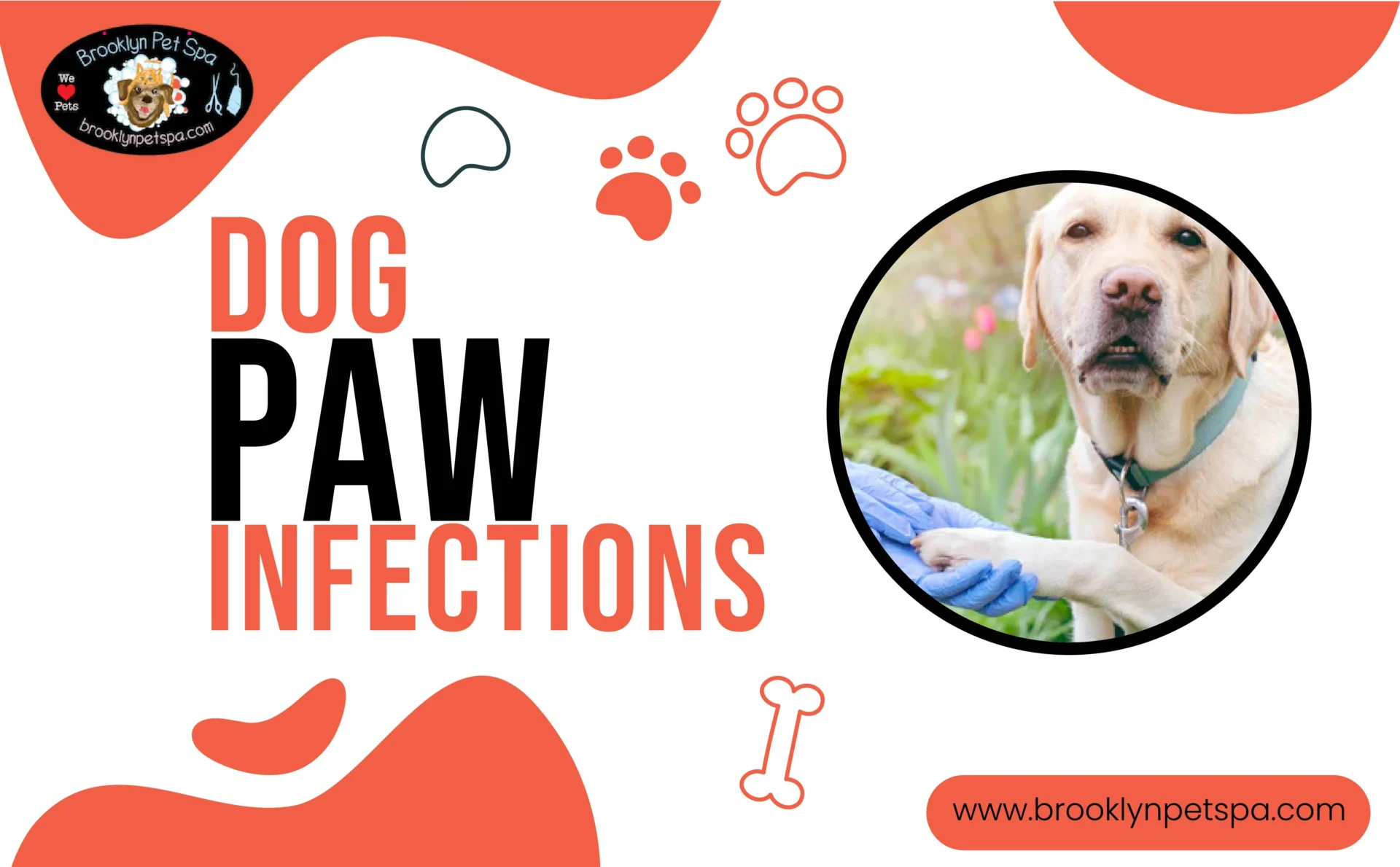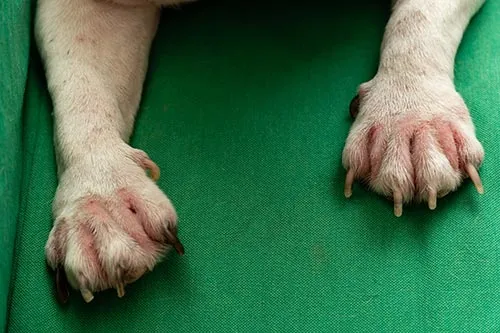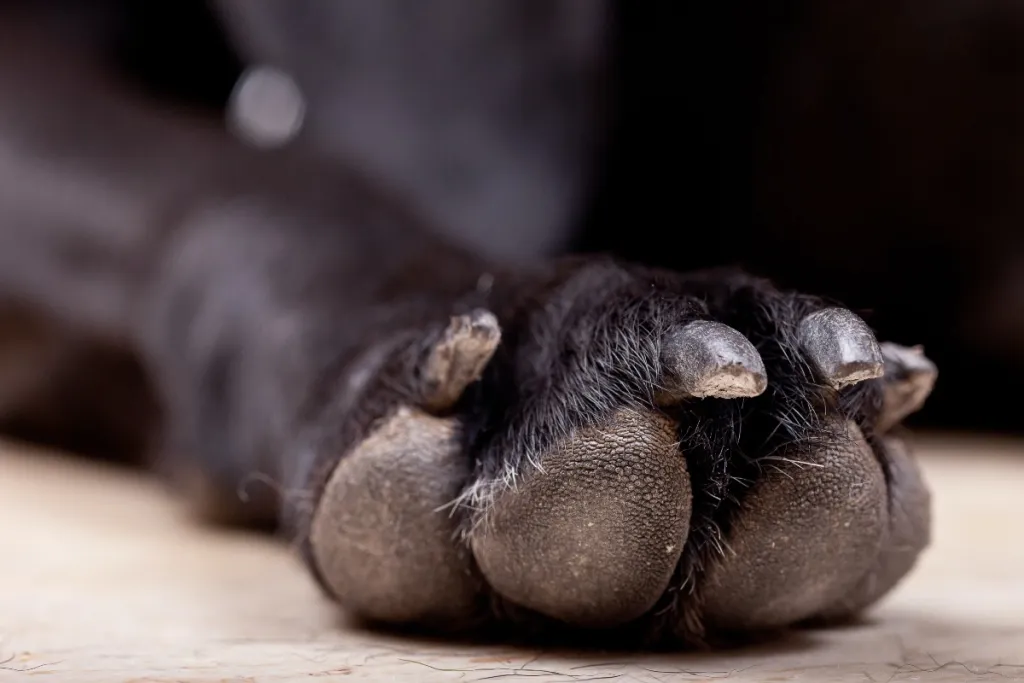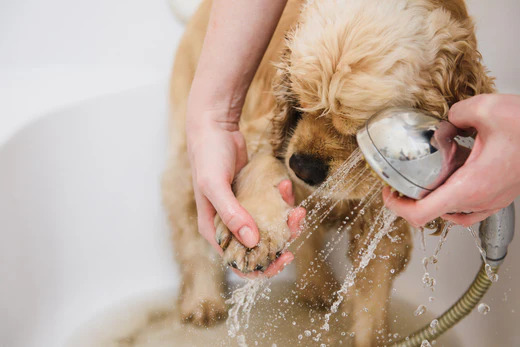Dog paw infection can cause distress for both dog and their companions. These infections can cause and manifest different forms of swelling, discomfort, and redness in a dog’s paw. Just like humans, dogs’ paws are an important part of their anatomy and are prone to constant exposure to different surfaces like environmental elements and allergens, leading to paw pad problems in dogs.
Table of Contents
ToggleCommon reason for Paw Infection
One common reason for paw infection is bacteria which can be caused by inter-spaces between the paws, abrasions, and small cuts. Infections like yeast and fungus can be caused by the moist in between the pad spaces of the dog’s paw. Additionally, dog paw infection can be caused by splinters and thorns can penetrate in dog’s paw. Dogs with allergies and compromised immune systems are especially vulnerable to paw infections – this weakens their natural defense mechanism.
Dog paw infections can be prevented if recognized before things go out of hand. This helping guide will show all about dog paw infection causes, symptoms, and treatments.
Causes of Dog Paw Infection
Dog paw infections can arise from different causes. This put the dog owners in a rush to seek various first-hand treatments. Before jumping to the treatments, first, we have to understand what are the causes of dog paw infections.
1. Fungal Infections
Yeast or fungi in the dog’s paw can be caused by a damp environment. Dogs living in humid climates and with allergies are more prone to different dog paw infections. Fungal infections can cause unpleasant odors, inflamed paws, and itchiness.
2. Bacterial or Parasite Infections
One of the common reasons for dog paws infections is bacteria. Outgoing dogs are prone to punctures, scrapes, and cuts which can cause bacterial infections. The common bacterial infections found in dog paws are Staphylococcus.
Parasites like mites and ticks can attach themselves to the dog’s skin. These parasites are usually found in the pad spaces of a dog’s paw.
3. Allergies
Dogs with allergies can have an infectious paw since their skin is prone to different diseases and bacteria. Dogs are usually seen as self-grooming when they have allergic paw infections. It is important to identify underlying allergies to reduce the risk of paw infection for dogs.
4. Foreign Objects
Sharp objects like shards, splinters, and thorns can cause severe dog paw infections. Outgoing dogs usually face such infections causing wounds and getting an infected paw.
5. Low Immunity System
Dogs with low immunity systems are liable to multiple infections, especially on paws. This is because it is the only part of the dog that has no fur and has a lot of exposure. Conditions like diabetes, autoimmune disorders, or dogs on certain medications have less ability to find paw infections.
6. Environmental Irritants
Environments having hash factors like chemical-laden surfaces, ice melt, or road salt can result in instant irritation on a dog’s paw. Exposure to these substances can usually in winter.
7. Lack of Proper Grooming
Dogs having hair between their paw are mostly prone to trapping debris and the creation of mattes causing moisture and further leading to dog paw infection. Scheduled visits to pet groomers can prevent all kinds of dog paw infections.
8. Genetic Predispositions
Some dog breeds have a certain skin condition that can cause different dog paw infections. For example, dog breeds that have wrinkled or folded skin are prone to different dog paw infections.
11 Symptoms of Dog Paw Infections
It is the duty of pet owners to keep an eye on the fur babies indicating a dog sore paw. Below are the symptoms to recognize dog paw infections.
1. Redness and Swelling
Redness and swelling in the dog’s paw a common observations for infection. This means there is severe inflammation in your dog’s paw. The infected paw may seem larger compared to the rest of the three paws. The dog paw pads may seem redder than usual.
2. Favoring and Limping a Paw
Your dog may be walking differently and may favor or limp with the infected paw. This will clearly mean that your dog is facing discomfort and pain. Make sure that you keep a close eye on your dog’s mobility.
3. Lesions or Visible Sores
Paw infections can be caused by open wounds, lesions, and visible sores. This can be seen between the spaces of dog paw pads. These are sensitive areas and the dog’s behavior may be different upon touching the paw.
4. Excessive Chewing and Licking
Dogs have the habit of grooming themselves and you may not understand the difference between excessive and normal chewing and licking. If your dog is continuously chewing and licking the paw, there is a chance that there could be some kind of paw infection
5. Changes in Behavior
Dogs experience discomfort when they face a dog paw infection and will definitely have a changed behavior. They could be distracted or irritated, they could be skipping meals or walks. Be careful before the inspection, the dog could show aggressive behavior.
6. Odor
Foul odor from dogs is a huge symptom that your dog could be having an infected paw. It could be fungal or bacterial infections. Bad odors occur when there is a growth of bacteria and fungus (microorganisms) producing stink.
7. Warmth to the Touch and Discoloration
Inflammation caused by dog paw infection can result in warmer areas. When this happens, usually the dog’s paw will be a lot red than usual.
8. Difficulty in Standing and Walking
If you have seen your dog recently having difficulty standing and walking, it is a confirmed symptom that your dog has some kind of paw infection.
9. Systemic Signs
Your dog could have a fever, loss of appetite, and laziness. Although these symptoms are associated with multiple dog health issues if you see your dog having these signs, do check the paws.
10. Paw Discharge
Discharge like bad-smelling fluid and pus in the dog’s paw means there is an infection. In such cases, you should rush your dog to the nearest vet.
11. Hair Loss
Some dog paw infections can breach the whole immunity system and it can cause hair loss. This symptom is also associated with multiple dog health issues but dog paw infection could be one of them.
9 Treatments for Dog Paw Infections
Treating a dog’s paw infection involves both professional and home care. Below are the first-hand treatments you can do to cure a dog’s paw infection.
1- Antifungal and Antibiotics Medications
If any bacterial infection is diagnosed, antibiotics are recommended to put an end to bacteria caused by paw infection. For fungal infections, antifungal medications are recommended which can include oral and cream medications. Make sure that your dog completes the entire course.
2- Veterinary Examination
The first step to cure a dog’s paw infection is by taking your pet-baby to the best veterinary hospital/clinic. They will assess and examine the dog and do a complete health checkup. If the vet determines a paw infection, he/she will recommend the above-mentioned medications.
3- Paw Soaks
This treatment can become a temporary or permanent solution to dog paw infections. All you need to do is get some warm water and add some antiseptic solutions, mix it u, and ensure that your dog dips its paws and stays there for some minutes.
4- Topical Treatments
Topical treatments like paw ointments and balms can help soothe the affected area which will further result in healing. Topical treatments can include antifungal and antibacterial agents to fight the infections directly
5- E-Collar (Elizabethan Collar)
To prevent the dog from excessively chewing and licking the infected area, get an e-collar and put it around the dog’s neck. This will start the healing process and get your dog a healthy paw.
6- Anti-inflammatory and Corticosteroids Medications
In cases where inflammation is the most common symptom, drugs like non-steroidal, corticosteroids, and anti-inflammatory (NSAIDs) are highly recommended. These medications not only speed up the healing process but also aid in preventing pain.
7- Nutritional Support
Every dog owner wants their pup to be in optimum condition and any paw infection heals fast. For this, ensure that your dog is getting the right and best nutrition. Dogs with strong immunity systems can fight any bacteria and infection.
8- Wound Management
If your dog has an injury and leaves it with an open wound in the paw, you will have to do a lot of management. This means that you regularly have to clean the wound, apply ointments, and bandage, or take your dog to scheduled vet visits.
9- Environmental Changes
If your dog has a severe paw infection, ensure that you keep a clean and safe environment for your dog. Minimize any potential allergens and irritants. Your dog’s playtime has to be at home for a couple of days, clean the bed where your dog sleeps, and such.
Conclusion
Addressing dog paw infection requires a lot of effort – combining at-home management and professional checkups. Dog owners should be good observers to see different symptoms of dog paw infections. Regular paw maintenance, commitment to dog health care, and environmental adjustments can prevent any kind of dog paw infection, or any infection for that matter.
By understanding these different causes and symptoms, the above-suggested first-hand care can prevent your dog’s paw infection advancement and any future infections. Proactive care for your dog can leave pet owners with healthy paws and happy dogs.
FAQs
Which substance instantly kills bacteria on a dog’s paw?
Apple cider vinegar is a natural and effective solution to clean bacteria on your dog’s paw. It is not a cure but it will ease the pain.
How to treat bacterial and fungal infections on your dog’s paw?
Bacterial and fungal infections can be cured by shampoos, sprays, wipes, and topical antifungal creams. If it doesn’t help, get your dog proper medical care.
How yeast is eliminated from a dog’s paw?
The vet may recommend a disinfectant spray. This kills germs and bacteria that cause yeast on the dog’s paw.










